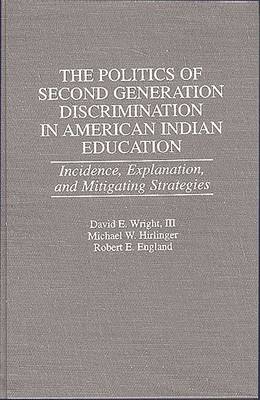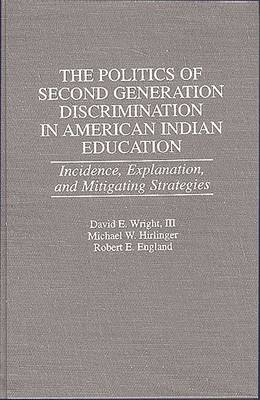
- Afhalen na 1 uur in een winkel met voorraad
- Gratis thuislevering in België vanaf € 30
- Ruim aanbod met 7 miljoen producten
- Afhalen na 1 uur in een winkel met voorraad
- Gratis thuislevering in België vanaf € 30
- Ruim aanbod met 7 miljoen producten
The Politics of Second Generation Discrimination in American Indian Education
Incidence, Explanation, and Mitigating Strategies
David E Wright, Michael W Hirlinger, Robert E EnglandOmschrijving
Academic grouping techniques are often subtle methods of discrimination that allow schools to sort students into homogenous groups. Findings indicate that American Indian students are overrepresented in lower-ability special education classes and in suspensions. Conversely, American Indian students are underrepresented in gifted classes and in graduations. A model, including American Indian representation, education, and income, as well as school district size, explains the amount of second generation discrimination faced by American Indian students. School districts that have greater American Indian political power have greater political representation on the school board and hence greater representation in school administration and in classrooms. The most important and consistent factor limiting the amount of second generation discrimination that American Indian students experience is the presence of American Indian teachers.
Specificaties
Betrokkenen
- Auteur(s):
- Uitgeverij:
Inhoud
- Aantal bladzijden:
- 192
- Taal:
- Engels
Eigenschappen
- Productcode (EAN):
- 9780897895316
- Verschijningsdatum:
- 23/04/1998
- Uitvoering:
- Hardcover
- Formaat:
- Genaaid
- Afmetingen:
- 162 mm x 243 mm
- Gewicht:
- 489 g

Alleen bij Standaard Boekhandel
Beoordelingen
We publiceren alleen reviews die voldoen aan de voorwaarden voor reviews. Bekijk onze voorwaarden voor reviews.











